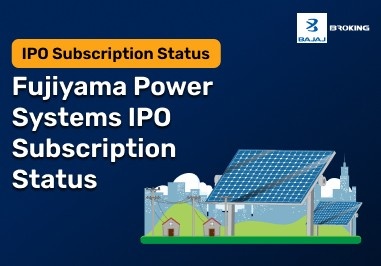Indian Railway stocks represent shares of companies involved in India's railway sector, including finance, infrastructure, and related services. The Indian railway network is one of the largest globally, with a wide range of listed companies contributing to its operations and development. Market capitalisation reflects the value of these companies, which varies depending on their size and performance within the railway industry. This article provides an overview of Indian railway stocks by market cap as of 2025.
What are Indian Railway Stocks?
Indian Railway Stocks refer to companies that directly or indirectly contribute to the railway ecosystem in India. These may include:
Public sector undertakings (PSUs) involved in rail operations, infrastructure, and manufacturing
Private entities that supply components, technology, or logistics to the Indian Railways
Navratna and Miniratna companies linked to rolling stock, signalling systems, electrification, and more
These stocks often attract investor interest during infrastructure announcements, budget allocations, or plans for new routes, electrification projects, or public-private partnerships.
Railway Industry in India
The railway industry in India operates as a crucial component of the country’s transportation infrastructure. It connects remote regions, supports freight movement, and facilitates passenger travel. The sector is government-controlled but includes various public and private entities listed on stock exchanges. Its scale and strategic importance make it a significant contributor to India’s economy. Investments in railway stocks reflect interest in this large and evolving sector, influenced by infrastructure expansion and modernisation efforts.
The Indian Railway Industry is undergoing significant transformation, driven by substantial investments and modernization efforts. In the 2025-26 fiscal year, Indian Railways is expected to receive a capital expenditure increase of 15-20%, potentially exceeding ₹3 lakh crore (approximately $36 billion) to enhance infrastructure, including track expansion and modern train procurement.
Key initiatives include the introduction of 400 new Vande Bharat trains and the development of high-speed rail corridors, which aim to boost capacity and reduce travel times. The government is also focusing on electrification, with a goal of achieving 100% electrification across its network, thereby reducing carbon emissions significantly. The integration of advanced technologies such as artificial intelligence for traffic management and predictive maintenance is set to improve operational efficiency. Additionally, Indian Railways is exploring sustainable energy solutions, including partnerships for nuclear power generation to support its energy needs.
These developments reflect a commitment to enhancing passenger experience while maintaining affordability and accessibility in rail services, positioning Indian Railways as a vital component of India's growth strategy.
Top Railway Stocks in India 2025 as per Analyst Ratings
Analysts track various Indian railway stocks based on financial metrics, industry position, and market cap. Below is a table of some key railway stocks noted for their roles within the sector. These stocks represent a spectrum of companies involved in financing, infrastructure, and logistics.
Company Name
| Sector
| Key Activity
|
Indian Railway Finance Corp Ltd.
| Finance
| Rail sector financing
|
IRCTC Ltd.
| Services
| Rail ticketing and catering
|
Rail Vikas Nigam Ltd.
| Infrastructure
| Rail infrastructure projects
|
Container Corporation of India Ltd.
| Logistics
| Container transport and logistics
|
Ircon International Ltd.
| Infrastructure
| Rail and road construction
|
Titagarh Railsystems Ltd
| Manufacturing
| Rail equipment manufacturing
|
RITES Ltd
| Consultancy
| Rail consultancy and engineering
|
Overview of Top Railway Stocks in India
The following companies represent different segments of the Indian railway sector and contribute to the overall ecosystem through financing, services, infrastructure, and manufacturing.
1) Indian Railway Finance Corp Ltd.
Indian Railway Finance Corporation Limited (IRFC) serves as the dedicated financing arm of the Indian Railways. It raises funds through bonds and loans, which are utilised for railway infrastructure development and asset acquisition. IRFC’s role is primarily financial, providing long-term funding for rail projects across the country.
2) IRCTC Ltd.
Indian Railway Catering and Tourism Corporation (IRCTC) handles the ticketing, catering, and tourism services for Indian Railways. Its operations include online ticket booking platforms, onboard catering, and tourism packages. IRCTC’s activities are service-oriented and play a key role in passenger experience and revenue generation.
3) Rail Vikas Nigam Ltd.
Rail Vikas Nigam Limited (RVNL) undertakes infrastructure projects related to the Indian Railways. This includes construction of tracks, bridges, and station upgrades. RVNL operates under the Ministry of Railways and focuses on project implementation to expand and modernise the rail network.
4) Container Corporation of India Ltd.
Container Corporation of India Limited (CONCOR) provides container transportation and logistics solutions. It manages freight movement through rail-based container services, facilitating efficient cargo transport across the country.
5) Ircon International Ltd.
Ircon International Limited specialises in infrastructure construction and engineering. It works on railway and road projects, both within India and internationally, contributing to infrastructure development and maintenance.
6) Titagarh Railsystems Ltd.
Titagarh Railsystems Limited is involved in the manufacture of railway wagons, coaches, and other rolling stock. It supports the rail industry by supplying equipment needed for freight and passenger services.
7) RITES Ltd.
RITES Limited offers consultancy, engineering, and project management services for the railway sector. It provides expertise in transportation infrastructure, including planning and execution of rail projects.
Advantages of Investing in Indian Railway Stocks in India
Steady Revenue Streams
Many railway companies generate consistent revenue through government contracts, passenger services, and freight operations. This can provide relative stability compared to other sectors.
Infrastructure Growth
Ongoing infrastructure projects in railways involve significant capital investments, which can influence related companies positively through contracts and service demand.
Government Backing
The railway sector is largely government-supported, affecting policies, funding, and development priorities that influence industry players.
Diverse Sector Roles
Railway stocks cover various segments such as financing, infrastructure, manufacturing, and services, offering exposure to different facets of the sector.
What are the Features of Indian Railway Stocks in India?
Indian Railway Stocks possess several distinct features that make them attractive to investors:
Government Support: Indian railway companies, many of which are public sector undertakings (PSUs), benefit from strong government backing. This includes substantial budget allocations for infrastructure development, electrification, and modernization projects, ensuring steady growth potential.
Diverse Services: Indian Railway Stocks represent companies involved in various sectors, including passenger services (IRCTC), freight logistics (RVNL), infrastructure development (Ircon International), and financing (IRFC). This diversity provides investors with multiple avenues for investment.
Long-Term Growth: The Indian railways sector is undergoing significant expansion, with projects like high-speed rail corridors and Vande Bharat trains. These initiatives create long-term investment opportunities due to their extensive timelines and consistent demand for services.
Dividend Potential: Many railway PSUs offer stable dividends, making them attractive for income-seeking investors. For example, IRFC and RVNL have a history of providing regular payouts.
Market Performance: Indian Railway Stocks often experience surges due to announcements related to infrastructure projects or budgetary focus on railways. Recent examples include peaks in IRFC and RVNL stock prices following announcements of new trains and coaches.
Top Indian Railway Stocks in India as per Market Capitalisation
The table below lists select railway-related companies in India, ranked by their market capitalisation. These stocks span segments like logistics, rail engineering, and rail wagon manufacturing.
Company Name
| Last Price (₹)
| % Change
| 52-Week High (₹)
| 52-Week Low (₹)
| Market Cap (₹ Cr)
| Segment
|
Container Corporation of India
| 689.6
| 2.03%
| 1,193.95
| 601.65
| 42,016.94
| Ground Freight & Logistics Services
|
BEML Ltd.
| 2,796.00
| 1.86%
| 5,489.15
| 2,346.35
| 11,643.80
| Engineering - Industrial Equipments
|
Titagarh Rail Systems
| 784.5
| 5.61%
| 1,896.50
| 655.30
| 10,565.16
| Railways Wagons
|
Texmaco Rail & Engineering
| 145.00
| 5.15%
| 296.60
| 122.60
| 5,792.28
| Railways Wagons
|
Kernex Microsystems
| 761.00
| 0.72%
| 1,584.00
| 333.55
| 1,275.39
| IT Services & Consulting
|
Source: Moneycontrol as of March 22, 2025
BEML Ltd.
BEML Ltd. is a public sector company engaged in manufacturing rail coaches, defence equipment, and mining machinery. It serves core industries such as defence, aerospace, power, and mining.
Key Financial Metrics and Market Data:
Metric
| Value
|
Market Cap
| ₹11,638 Cr
|
Last Price
| ₹2,794.65
|
52-Week High / Low
| ₹5,488.00 / ₹2,350.00
|
TTM EPS
| ₹62.86
|
TTM PE
| 44.46
|
P/B Ratio
| 4.31
|
ROE
| 10.56%
|
Debt to Equity
| 0.02
|
Dividend Yield
| 0.73%
|
Book Value per Share
| ₹648.16
|
Source: Moneycontrol
Additional Highlights:
Performance Note: The stock is down -31.31% YTD in 2025 despite a healthy long-term growth trajectory and moderate leverage profile.
Titagarh Rail Systems Ltd.
Titagarh Rail Systems Ltd. manufactures railway wagons, passenger coaches, bridges, and defence-related equipment. It is positioned as a key player in India's rolling stock and railway infrastructure sector.
Key Financial Metrics and Market Data:
Metric
| Value
|
Market Cap
| ₹10,565 Cr
|
Last Price
| ₹784.50
|
52-Week High / Low
| ₹1,896.95 / ₹654.55
|
TTM EPS
| ₹21.49
|
TTM PE
| 36.51
|
P/B Ratio
| 4.49
|
ROE
| 12.89%
|
Debt to Equity
| 0.03
|
Dividend Yield
| 0.10%
|
Book Value per Share
| ₹174.82
|
Source: Moneycontrol
Additional Highlights:
Performance Note: Despite a recent correction, the stock has delivered significant long-term gains. It’s categorized as a high-growth stock with improving financial efficiency.
Kernex Microsystems (India) Ltd.
Kernex Microsystems is a tech-based company providing embedded systems and software solutions for railway safety. It specializes in the development and deployment of anti-collision systems and recently secured a major order under the KAVACH railway safety program.
Key Financial Metrics and Market Data:
Metric
| Value
|
Market Cap
| ₹1,292 Cr
|
Last Price
| ₹771.45
|
52-Week High / Low
| ₹1,580.00 / ₹335.00
|
TTM EPS
| ₹3.00
|
TTM PE
| 257.15
|
P/B Ratio
| 11.05
|
ROE
| -24.77%
|
Debt to Equity
| 0.26
|
Dividend Yield
| --
|
Book Value per Share
| ₹69.79
|
Source: Moneycontrol
Additional Highlights:
Performance Note: While recent earnings show a turnaround, the stock trades at a very high valuation with weak financial strength indicators. The stock saw significant traction following large government orders
How do Indian Railway Stocks Work?
Indian Railway stocks represent shares in companies that provide various services to the railway sector in India. These companies may operate in financing, infrastructure development, operations, or manufacturing related to railways. Shareholders gain ownership in these companies, which entitles them to dividends and potential capital appreciation based on company performance and market conditions.
Indian Railway Stocks represent companies involved in various aspects of the railway sector, including infrastructure development, passenger services, freight logistics, and financing. These stocks operate within the framework of the Indian economy and government policies, offering unique investment opportunities.
Ownership and Structure:
Many railway companies are Public Sector Undertakings (PSUs), meaning they are government-owned. Examples include Indian Railway Finance Corporation (IRFC), Rail Vikas Nigam Ltd (RVNL), and IRCTC. Their operations are closely tied to government initiatives and funding.
Revenue Streams:
Railway companies generate revenue through diverse channels such as leasing rolling stock (IRFC), catering and tourism services (IRCTC), and freight transport (Container Corporation). This diversification helps mitigate risks associated with economic fluctuations.
Market Dynamics:
Indian Railway Stocks are influenced by factors like government budget allocations, infrastructure projects, economic growth, and technological advancements. For instance, announcements of new trains or electrification projects often lead to stock price surges.
Investment Appeal:
These stocks often offer stable dividends and long-term growth potential due to consistent demand for railway services. They are considered relatively safe investments due to government backing and predictable revenue streams.
Factors to Consider Before Investing in Railway Stocks in India
Several factors affect the performance of railway stocks. These include regulatory environment, financial health, technology adoption, risks, and demand trends within the sector. The following table summarises key considerations.
Factor
| Description
|
Government Policies and Regulations
| Railway sector regulations and policies impact operations, funding, and project approvals.
|
Financial Performance
| Evaluation of company earnings, debt levels, and revenue streams is crucial.
|
Technological Advancements
| Adoption of new technology influences efficiency, safety, and service quality.
|
Risk Factors
| Risks include policy changes, operational challenges, and economic fluctuations.
|
Demand Trends
| Passenger and freight demand trends affect revenue prospects and company growth.
|
Government Policies and Regulations
The Indian railway sector is subject to government policies that influence investment, infrastructure development, and service provisions. Changes in regulations can affect the profitability and operations of companies within the sector.
Financial Performance
Assessing financial metrics such as revenue growth, profitability, and debt levels helps understand a company’s stability and ability to manage projects within the railway sector.
Technological Advancements
The integration of new technologies in rail operations, safety, and logistics can impact company efficiency and competitiveness.
Risk Factors
Risks in the railway sector include delays in project execution, funding constraints, and macroeconomic changes that may affect demand and profitability.
Demand Trends
Changes in freight and passenger volumes influence revenue potential. Growth in industrial output or urbanisation can affect these demand patterns.
Conclusion
Investing in Indian Railway Stocks can be a strategic move given the sector's robust growth potential driven by government support, increasing demand, and technological advancements. The substantial budget allocations for infrastructure development signal a commitment to modernizing the railway system, which is likely to benefit investors in the long run. However, potential investors should conduct thorough research on individual companies, considering factors such as financial performance and market conditions, to make informed investment decisions. With the right approach, investing in this sector could yield significant returns as India continues to enhance its railway infrastructure.















